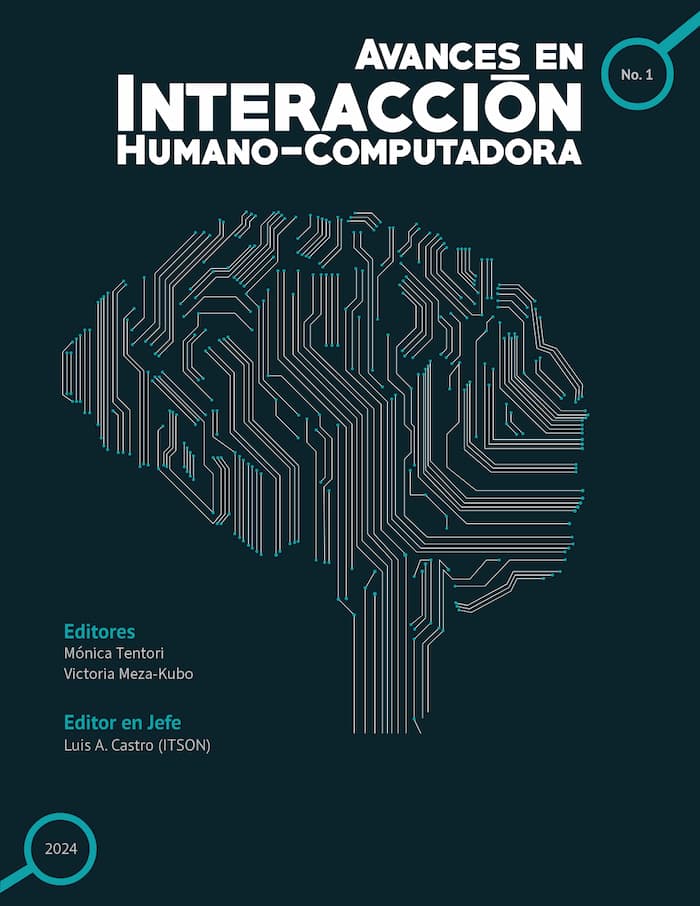Interdisciplinary Co-Design Process of Instructional Lesson Plans for Promoting the Responsible Use of AI
DOI:
https://doi.org/10.47756/aihc.y9i1.172Keywords:
Critical Participatory Action Research, Collaborative Instructional Design, Generative Artificial Intelligence, Interdisciplinarity, Higher EducationAbstract
This article aims to provide a general overview of the instructional co-design process for lesson plans that promote awareness of responsible AI across various university courses. The expected outcomes and discussions aim to be valuable for teaching Human-Computer Interaction (HCI) courses.
This article's authors consist of both the co-designers and the research team; therefore, the results and discussions are presented from both perspectives. The collective learning experience took various directions, including the use of AI tools.
Downloads
References
ANIA. Alianza Nacional de Inteligencia Artificial. ANIA. https://www.ania.org.mx/, acceso día 12/ 05/ 2024.
Amado-Salvatierra, H. R., Chan, M. M., Hernandez-Rizzardini, R. (2023, October). Combining Human Creativity and AI-Based Tools in the Instructional Design of MOOCs: DOI: https://doi.org/10.1109/LWMOOCS58322.2023.10306023
Benefits and Limitations. In 2023 IEEE Learning with MOOCS (LWMOOCS) (pp. 1-6). IEEE.
Cohen, L., Precel, H., Triedman, H., & Fisler, K. (2021, March). A new model for weaving responsible computing into courses across the CS curriculum. In Proceedings of the 52nd ACM Technical Symposium on Computer Science Education (pp. 858-864). DOI: https://doi.org/10.1145/3408877.3432456
da Silva, C. A. F., de Souza Matos, E., Zabot, D., Tavares, G. O., & dos Santos, J. M. O. (2022, July). De" Vale nota?" a" Jogo é prova!": raciocínio computacional e protagonismo docente como estímulo ao protagonismo discente no ensino de língua portuguesa. In Anais do XXX Workshop sobre Educação em Computação (pp. 133-144). SBC. DOI: https://doi.org/10.5753/wei.2022.223287
Esquivel Gámez, I. (2014). Los Modelos Tecno-Educativos, revolucionando el aprendizaje del siglo XXI. Primera edición, México, 256p.
Harel, I. E., & Papert, S. E. (1991). Constructionism. Ablex Publishing.
Kemmis, S., McTaggart, R., Nixon, R.: The action research planner: Doing critical participatory action research. Springer (2014). DOI: https://doi.org/10.1007/978-981-4560-67-2
Könings, K. D., Brand-Gruwel, S., & van Merriënboer, J. J. (2010). An approach to participatory instructional design in secondary education: an exploratory study. Educational Research, 52(1), 45-59. DOI: https://doi.org/10.1080/00131881003588204
Löfström, E. (2012). Students’ ethical awareness and conceptions of research ethics. Ethics & Behavior, 22(5), 349–361. DOI: https://doi.org/10.1080/10508422.2012.679136
Miranda, G. A., Delgado, Z. Y., & Meza, J. M. (2020). Diseño de secuencias instruccionales SOOC. Guía del docente. Educación y Cultura Libre.
Morandín-Ahuerma, F. (2023). Principios normativos para una ética de la inteligencia artificial. Secretaría de Educación, CONCYTEP y BUAP Complejo Regional Nororiental1ra ed., Puebla, México.
Ruiz-Rojas, L. I., Acosta-Vargas, P., De-Moreta-Llovet, J., Gonzalez-Rodriguez, M. (2023). Empowering education with generative artificial intelligence tools: Approach with an instructional design matrix. Sustainability, 15(15), 11524. DOI: https://doi.org/10.3390/su151511524
Schuler, D., Namioka, A.: Participatory Design: Principles and Practices. Lawrence Erlbaum Associates, Hillsdale (1993).
UNESCO. Recommendation on the ethics of artificial intelligence. (2021). https://unesdoc.unesco.org/ark:/48223/pf000038113
Downloads
Published
How to Cite
Issue
Section
License

This work is licensed under a Creative Commons Attribution-NonCommercial-NoDerivatives 4.0 International License.
AMexIHC make every effort to ensure the accuracy and rigour of all the information (the "Content") contained in out publications. However, AMexIHC and our representatives make no representations or warranties whatsoever as to the accuracy, completeness, or suitability for any purpose of the Content. Any opinions and views expressed in this publication are the opinions and views of the authors, and are not the views of or endorsed by AMexIHC. The accuracy of the Content should not be relied upon and should be independently verified with primary sources of information.


